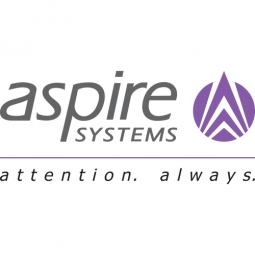
Technology Category
- Application Infrastructure & Middleware - Event-Driven Application
- Platform as a Service (PaaS) - Application Development Platforms
Applicable Industries
- Buildings
- Telecommunications
Applicable Functions
- Product Research & Development
- Quality Assurance
Use Cases
- Experimentation Automation
Services
- Testing & Certification
The Customer
Saudi Telecommunication Company (STC)
About The Customer
The customer, Saudi Telecommunication Company (STC), is a leading telecom distributor in the Middle East. With over 6000 subscribers, STC provides a range of services including mobile computing and internet services. However, the company was facing significant challenges due to its outdated monolith architecture-based application. The lack of agility and flexibility, coupled with long development and test cycles, complex interdependencies, and extensive manual testing, was hindering the company's growth and ability to keep up with the fast-paced telecom industry. The company's outdated framework also made it difficult to adopt new technologies and implement continuous deployment.
The Challenge
Saudi Telecommunication Company (STC), a leading telecom distributor in the Middle East with over 6000 subscribers, was facing significant challenges due to its outdated monolith architecture-based application. The company was struggling with a lack of agility and flexibility, long development and test cycles, complex interdependencies, infrequent large releases, extensive manual testing, limited scalability and reliability, performance bottlenecks, and a lack of control of services. The outdated framework made it difficult for STC to adopt new frameworks and implement continuous deployment, which required the entire application to be redeployed. The company was striving to keep releases on track amidst these challenges.
The Solution
Aspire Systems, a global technology services firm, provided a solution to STC's challenges by re-architecting multiple applications to a microservice architecture. This new architecture is multi-tenant and supports data storage and a 'share everything model'. The deployment architecture was designed to use various managed services of AWS. Common services were architected as platform shared services, while separate services were provided for each of the application's key functional areas such as payments, orders, etc. These microservices were delivered using EKS. The solution also reduced direct communication between microservices by using an event-driven mechanism for inter-service communications. A centralized log forwarding system was implemented from application and clusters. This solution improved agility, better flexibility, loose coupling, and minimized dependencies, allowing the development teams to focus on various business areas of the application and aiding in the adoption of newer technologies and evolution of applications.
Operational Impact
Quantitative Benefit

Case Study missing?
Start adding your own!
Register with your work email and create a new case study profile for your business.
Related Case Studies.

Case Study
Energy Saving & Power Monitoring System
Recently a university in Taiwan was experiencing dramatic power usage increases due to its growing number of campus buildings and students. Aiming to analyze their power consumption and increase their power efficiency across 52 buildings, the university wanted to build a power management system utilizing web-based hardware and software. With these goals in mind, they contacted Advantech to help them develop their system and provide them with the means to save energy in the years to come.

Case Study
Intelligent Building Automation System and Energy Saving Solution
One of the most difficult problems facing the world is conserving energy in buildings. However, it is not easy to have a cost-effective solution to reduce energy usage in a building. One solution for saving energy is to implement an intelligent building automation system (BAS) which can be controlled according to its schedule. In Indonesia a large university with a five floor building and 22 classrooms wanted to save the amount of energy being used.

Case Study
Powering Smart Home Automation solutions with IoT for Energy conservation
Many industry leaders that offer Smart Energy Management products & solutions face challenges including:How to build a scalable platform that can automatically scale-up to on-board ‘n’ number of Smart home devicesData security, solution availability, and reliability are the other critical factors to deal withHow to create a robust common IoT platform that handles any kind of smart devicesHow to enable data management capabilities that would help in intelligent decision-making

Case Study
Protecting a Stadium from Hazardous Materials Using IoT2cell's Mobility Platform
There was a need for higher security at the AT&T Stadium during the NFL draft. There was a need to ensure that nuclear radiation material was not smuggled inside the stadium. Hazmat materials could often be missed in a standard checkpoint when gaining entry into a stadium.









